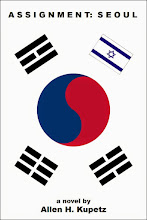
http://www.businessweek.com/print/magazine/content/07_27/b4041054.htm?chan=gl
Korea's New School Of Thought
As growth cools, the nation looks for an education model that spurs innovation
At about the same time, 110 miles away in the port city of Incheon, 13-year-old Moon Sang Hyun is committing to memory the formula for a metal alloy and the date of a 14th century Korean coup. If the eighth grader cant recite what he learned in his last algebra class, hell be caned by his teacher as his 40 classmates look on. School lets out at 3 p.m., but the uniformed Moon barely has time for a quick dinner before hopping the bus to a private cram school, where for five hours hell be force-fed English grammar, chemistry, and a host of other subjects. "I'm lucky to go home before midnight, he says with a shrug. "Some of my friends study till 1 or 2 in the morning."
Two students, two very different schools. And those varying approaches to learning are the focus of a debate in South Korea about which better serves todays knowledge-driven economy. Rote learning and cramming, however inhumane, are credited with transforming a poor, mostly agrarian nation into a manufacturing powerhouse in the space of just three decades. The country of 48 million now ranks 11th among the worlds economies and is a top exporter of everything from steel and ships to cell phones and computer chips. It spends 7.5% of its gross domestic product on education, a bigger share than any other industrialized country, and that figure doesnt even include the $38 billion a year Korean parents shell out for after-school cram sessions.
But as growth has cooled to 5% annually over the past decade, from an average rate of nearly 8% during the prior 30 years, some experts are griping that Koreas educational system no longer makes the grade. Everyone from policy wonks to executives at Samsung Group and other top Korean companies complains that the system discourages creative thinking and stifles innovation. "Schools castrate the innate desire of students to satisfy intellectual curiosity," laments Yi Jong Tae, head of the private think tank Korean Education Research Institute. Says Chung Un Chan, economics professor at Seoul National University: "The key to resolving our economic problems lies in a radical reform of our education."
In the meantime, Korea risks losing some of its best and brightest. The number of the country's students enrolled in foreign schools and universities rose to 214,000 in 2005, from 109,000 in 1998, the Korea National Statistical Office says. "Frustrated Koreans are voting with their feet against the educational system," says Hongik University economist Jun Sung In. Their top destination is the U.S.: In the 2005-06 academic year, 58,847 Koreans attended American universities, according to New Yorks Institute of International Education. That's up 10.3% from the previous year. Only India and Chinawith populations at least 20 times greater than Korea's send more students to the U.S.The danger is that many will leave for good. "If I went back to Korea, it would be like starting all over," says Yang Soo In, a 32-year-old Korean who received a masters degree from Columbia Universitys graduate school of architecture in 2005 and decided not to return home. "I've already established good contacts and a network of people here."
Nearly half of all Koreans who earned PhDs in science and technology from U.S. institutions between 2000 and 2003 remained in the U.S., up from 20% in 1992-95, reports the Hyundai Research Institute, a think tank in Seoul. "Brain drain is accelerating as our educational system can't keep up with changes in the business environment," says Yu Byoung Gyu, a senior research fellow at the institute.The swelling discontent has touched off a political debate. In May, Lee Ju Ho, a lawmaker from a leading opposition party, introduced legislation calling for a presidential commission to overhaul the school system. "The first step must be the end of government control over curriculum," says Lee. "The Ministry of Education and Human Resources must be disbanded in favor of a much slimmed-down department focused on lifetime learning."
Dissatisfied families are searching for their own solutions. "Parents got fed up with the official system," says Hyun Byung Ho, publisher of an education magazine called Mindle. Around 4,000 students are enrolled in about 70 alternative schools such as Peace Flower. The first Peace Flower opened near Seoul in 2003; today the group runs four schools with a total of 205 students. "We simply couldnt let our children fall victim to the regimentation of the state schools, says Kim Kyeong Sik, a college instructor and father of two boys, who was one of the schools founders. I hope our school will serve as a stepping stone toward major educational reform in our country. ◦

